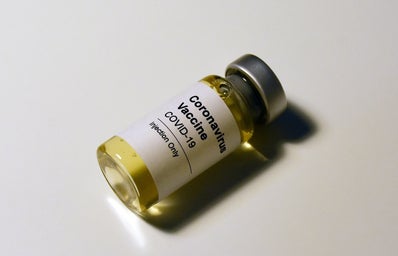There has been a lot of news and rumors, concerning the covid vaccine in the news lately. While many want to get the vaccine, a lot more are questioning the truth about the vaccine. Here’s the breakdown about each vaccine, including Moderna, Pfizer, and J&J. Using the information I found from the official CDC website.
Moderna Covid Vaccine
This vaccine is a mRNA vaccine. This type of vaccine inserts a segment of mRNA of the virus to train the body’s immune response to make the protein, which in this case is the spike protein, so that it can be triggered and fight against. This is a 2-shots vaccine, the second given one month apart. It is given in the muscles of the upper arm. Unlike other vaccines, this vaccine does not contain eggs, preservatives, or latex. The Moderna vaccine is recommended for those who are 18 years and older.
The side effects of the vaccine include:
- In the arm where you got the shot – pain, redness, and swelling
- Throughout the rest of the body – tiredness, headaches, muscle pain, chills, and nausea.
These side effects can be immediate, meaning within 4 hours of getting the vaccine. They can also start within a day or two of getting the vaccines. Most side effects were mild or moderate, and only a few amounts of individuals experience severe side effects. Most experience side effects after their second dose.
The Moderna vaccine is said to be 94.1% effective. This is true among people of diverse age, sex, race, ethnicity, as well as those with underlying medical conditions. It is also important to note that few individuals did get admitted to the hospital.
Pfizer Covid Vaccine
This vaccine is also an mRNA vaccine and works in a similar way to the Moderna shot. This a 2-shots vaccine, the second shot is to be given 21 days after the first vaccine. The shot is also given in the muscles of the upper arm. It does not contain eggs, preservatives, latex. This vaccine is recommended for people aged 16 years and older.
The sides of this vaccine, is similar to the Moderna vaccine, and include:
- In the arm where you got the shot – pain, redness, and swelling
- Throughout the rest of the body – tiredness, headache, muscle pain, chills, fever, and nausea.
These side effects can be immediate, meaning within 4 hours of getting the vaccine. But these side effects can also be within a day or two of getting the vaccine. The side effects were mild to moderate, and very few people had severe side effects.
The Pfizer vaccine is said to be 95% effective. Reactogenicity, which are side effects that happen within 7 days of getting vaccinated, effects were common but were mainly mild to moderate. Few people who received the Pfizer vaccine went to the hospital, and a few died.
Johnson & Johnson Covid Vaccine
This vaccine is unlike the Moderna and Pfizer vaccine in that it is a viral vector vaccine. A viral vector vaccine uses a modified segment of a different virus as a vector to deliver instruction to a cell. They do not contain antigens, rather they use the body’s own cells to produce antigens. This vaccine is only 1 shot and is to be given in the muscles of the upper arm of the individual. It does not contain eggs, preservatives, or latex. The J&J vaccine is recommended for people who are 18 years and older.
Side effects of this vaccine are similar to the other two vaccines, including:
- In the arm where you get the shot: pain, redness, and swelling
- Throughout the rest of your body: tiredness, headache, muscle pain, chills, fever, and nausea.
These side effects can start within 4 hours of getting the vaccine or can start within a day or tw getting the vaccine. It was common for side effects to show up within 7 days of getting vaccinated and were more common in people 18-59 years old.
The J&J vaccine is said to have a 66.3% efficacy rate. Individual who contracted the virus at least 4 weeks after the getting the vaccine were less likely to be hospitalized.
Although it has a low efficacy rate, those who did get the vaccine and were later diagnosed with COVID-19 had a smaller chance of being hospitalized and experiencing death.
Overall, there are ups and downs with taking the vaccines. Having a high efficacy rate allows for the prevention of contracting the virus. Having a low efficacy rate an individual may contract the virus, however, prevents severe symptoms and hospitalization. So, if you get the chance, get the vaccine and help keep your community safe.
Citations:


